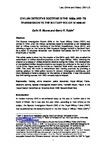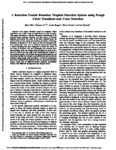Civilian Detective Doctrine in the 1930s and its Transmission to the Military Police in 1940-42
| dc.contributor.author | Moore, Colin | |
| dc.contributor.author | Rubin, Gerry R | |
| dc.date.accessioned | 2017-03-15T10:24:11Z | |
| dc.date.accessioned | 2017-04-11T08:56:19Z | |
| dc.date.available | 2017-03-15T10:24:11Z | |
| dc.date.available | 2017-04-11T08:56:19Z | |
| dc.date.issued | 2014 | |
| dc.identifier.citation |
Moore, C. and Rubin, G.R. (2015) 'Civilian Detective Doctrine in the 1930s and its Transmission to the Military Police in 1940-42.’, Law, Crime and History, 4(3), pp. 1-30. Available at: https://pearl.plymouth.ac.uk/handle/10026.1/8905 | en_US |
| dc.identifier.issn | 2045-9238 | |
| dc.identifier.uri | http://hdl.handle.net/10026.1/8905 | |
| dc.description.abstract |
The Special Investigation Branch (SIB) of the Royal Military Police (RMP) was formed in 1940, after the military authorities became concerned at the widespread theft of military stores by members of the British Expeditionary Force (BEF), and following a report on the matter by Chief Inspector George Hatherill of Scotland Yard. As a result 19 volunteer detectives from Scotland Yard joined the BEF to form the initial intake of the SIB. This article seeks to show that the creation of the SIB in early 1940, also entailed the transmission of civilian detective practices to the Royal Military Police, following the creation of a corpus of civilian detective doctrine during the 1930s. The development of standardised civilian detective doctrine can largely be attributed to the work of the Home Office Departmental Committee on Detective Work which was established in 1933. This body did much to disseminate best training practices by providing a training syllabus for initial police recruits in relevant investigative techniques, and more relevantly offered a syllabus for the training of detectives. It was this doctrine that SIB training courses from 1942 onwards duly embraced. | en_US |
| dc.language.iso | en | en_US |
| dc.publisher | University of Plymouth | |
| dc.rights | Attribution 4.0 International (CC BY 4.0) | * |
| dc.rights.uri | https://creativecommons.org/licenses/by/4.0/ | * |
| dc.subject | Policing | en_US |
| dc.subject | crime detection | en_US |
| dc.subject | police detectives | en_US |
| dc.subject | Royal Military Police | en_US |
| dc.subject | detective training | en_US |
| dc.subject | Special Investigation Branch (SIB) | en_US |
| dc.subject | Hatherill Report | en_US |
| dc.subject | Report of the Departmental Committee on Detective Work 1939 | en_US |
| dc.subject | Second World War | en_US |
| dc.title | Civilian Detective Doctrine in the 1930s and its Transmission to the Military Police in 1940-42 | en_US |
| dc.type | Article | en_US |
| dc.type | Article | |
| plymouth.issue | 3 | |
| plymouth.volume | 4 | |
| plymouth.journal | SOLON Law, Crime and History |





